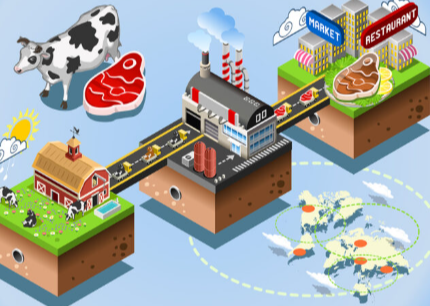The intersection of technology and food safety is transforming how products are traced and monitored throughout the supply chain. Blockchain technology offers a secure way to document product journeys, enhancing accountability. Concurrently, IoT devices provide continuous oversight of food conditions, while advanced data analytics identify potential risks. This amalgamation of technologies not only boosts operational efficiency but also fosters consumer confidence. The implications of these advancements merit further exploration to understand their full impact.
The Role of Blockchain in Food Traceability
As consumers increasingly demand transparency in their food sources, blockchain technology emerges as a pivotal solution for enhancing food traceability.
By providing a decentralized ledger, blockchain addresses traceability challenges, ensuring accurate tracking of products from farm to table.
The blockchain benefits include reduced fraud, increased consumer trust, and improved efficiency in supply chains, ultimately fostering a more transparent food ecosystem that empowers informed choices.
Read more: The Future of Tech in Home Automation and Energy Efficiency
IoT Devices: Real-Time Monitoring of Food Safety
While traditional monitoring methods may lag in responsiveness, IoT devices revolutionize food safety by enabling real-time tracking of environmental conditions throughout the supply chain.
Utilizing advanced sensor networks, these devices facilitate continuous temperature monitoring, ensuring that food products remain within safe parameters.
This innovation not only enhances consumer protection but also empowers businesses to respond swiftly to potential safety breaches, promoting overall accountability.
Advanced Data Analytics for Enhanced Food Safety
A growing number of food safety initiatives are leveraging advanced data analytics to significantly improve risk management and operational efficiency.
By employing predictive modeling, organizations can forecast potential hazards and outbreaks, enhancing proactive measures.
Additionally, data-driven risk assessment tools enable stakeholders to identify vulnerabilities in the supply chain, ensuring that safety protocols are effectively tailored to mitigate risks and safeguard public health.
Consumer Empowerment Through Transparency Technologies
Advanced data analytics not only enhances risk management within the food industry but also plays a pivotal role in fostering consumer empowerment through transparency technologies.
Labeling innovations, such as QR codes and blockchain, facilitate direct access to product information, promoting informed choices. This transparency, coupled with targeted consumer education, equips individuals to make healthier decisions, thereby enhancing their autonomy in food consumption.
Conclusion
In conclusion, the convergence of cutting-edge technologies significantly strengthens food safety and traceability. Blockchain bolsters trust through transparent tracking, while IoT devices deliver diligent monitoring of environmental factors. Additionally, advanced data analytics drive decisions by discerning potential dangers proactively. This trio of transformative tools not only safeguards public health but also supports savvy consumers seeking secure sustenance. Ultimately, the synergy of these systems cultivates a safer, smarter food supply chain, reinforcing the foundations of food safety and security.



